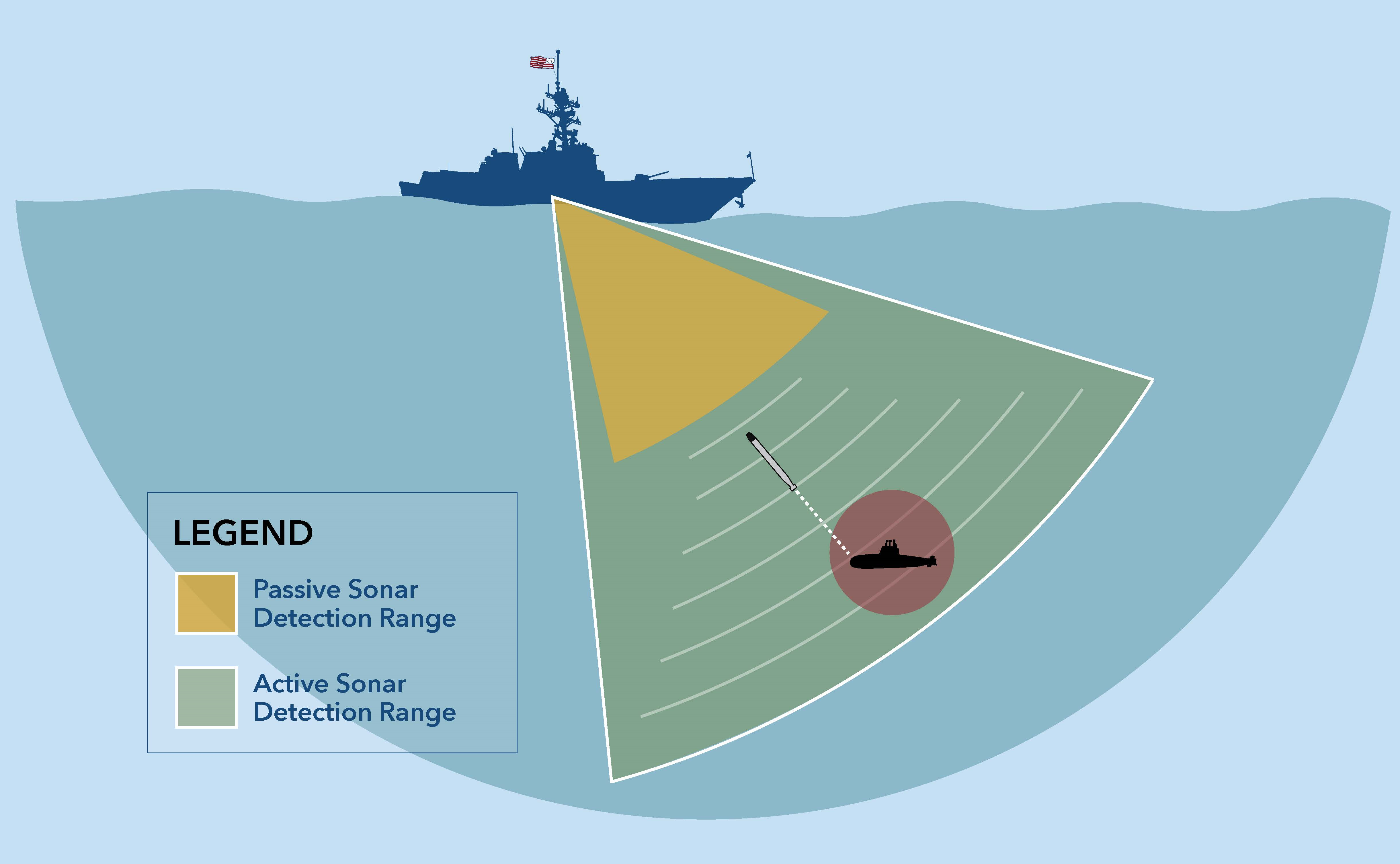U.S. Navy SONAR
Sound Navigation and Ranging (SONAR)
Originally an acronym for SOund Navigation And Ranging, sonar is used to find and identify objects in the water. Some types of sonar can be used to calculate distance to objects by measuring the time between when a sound wave is sent out and when the reflected sound, or echo, is received. Navy Sailors use sonar to detect submerged objects such as submarines and mines.
The ocean can be a very noisy place, full of sounds from natural sources like marine animals, breaking waves, rain, lightning, and earthquakes, to man-made sources like ships and seismic exploration. This makes listening for enemy submarines extremely difficult. It takes specialized training and lots of practice to be able to find modern submarines, which are designed to be extremely quiet.
Two Very Different Types of Sonar: Passive and Active
Passive Sonar
Passive sonar uses specialized transducers called hydrophones (or underwater microphones) to listen to sounds in the ocean. These hydrophones convert received sounds into electrical signals that are then sent to a computer for a sonar operator to look at, listen to, and analyze. Passive sonar does not transmit sound into the water and allows sonar operators to detect objects without giving away their position.
Active Sonar
Active sonar is the most effective means available for locating objects underwater. Active sonar sends out a pulse of energy that travels through water, reflects off of an object, and returns to a receiver. Active sonar has the ability to locate objects that are too quiet to be detected using passive sonar technology.

Sonar: Then and Now:
- In response to devastating allied shipping and human losses from German U-boat attacks during World War II, the Navy began using sonar.
- Today sonar is used to track and target submarines, detect mines, and navigate safely. With advances in technology, newer generation submarines pose a unique challenge to the Navy because they are very quiet and hard to detect in the noisy ocean environment.
- Active sonar’s longer detection range allows Sailors to detect, identify, and track these quieter, modern submarines before they are in range to use their weapons against our vessels.
Importance of training and testing with active sonar
- Today, more than 40 nations worldwide operate extremely quiet, newer generation submarines and associated weapons systems that can fire from long distances. These difficult-to-detect submarines, torpedoes, and in-water mines are a threat to global commerce, national security, and the safety of military personnel.
- The Navy uses both passive and active sonar to counter hostile submarines. Proficiency in the ability to use sonar is a complex and perishable skill that requires regular hands-on training in realistic and diverse conditions.
- The Navy needs to test and maintain sonar systems both at sea and pierside to ensure their reliability and availability. Maintaining and upgrading existing sonar systems also requires periodic testing and evaluation.
- Sound levels and the behavior of sound waves in the ocean are not constant, varying significantly with location and time. There are many sources of noise in the ocean that make detection of enemy submarines difficult, to include shipping, recreational boating, breaking waves, marine life, and rain. Today, most nations’ submarines operate in the complex littoral environment which contains an abundance of ocean life and many of these sources of noise.
Advances in adversary technology have made it necessary for the Navy to use active sonar. Passive sonar is no longer adequate in locating new, quieter submarines.
Protecting Marine Life During Training and Testing
The Navy takes proactive steps to protect marine life while using active sonar. These steps include posting trained personnel to serve as lookouts for marine mammals, surveying the area to ensure no animals are present before training starts, and reducing power or shutting down sonar when marine mammals are sighted within mitigation zones.